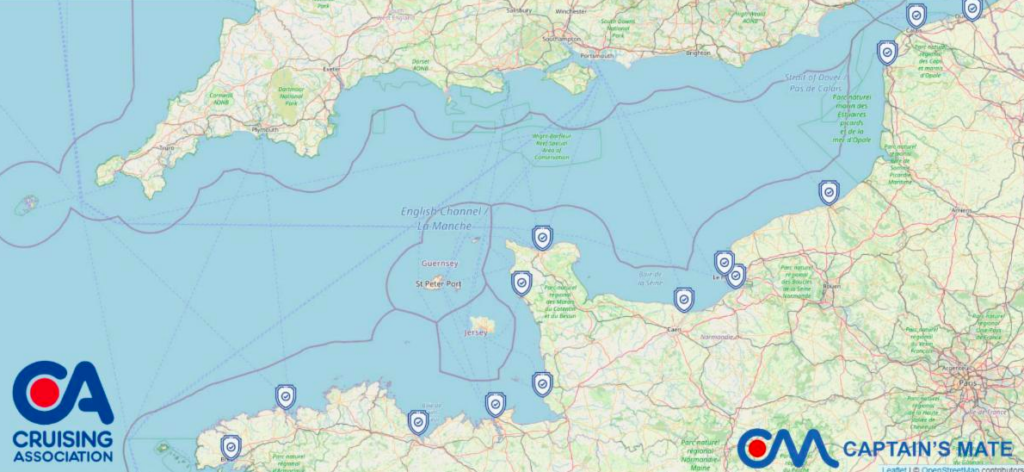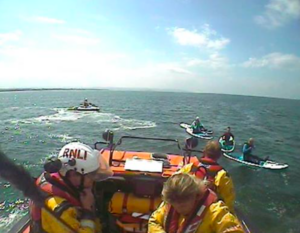Cruising Association issues guidance for visiting France

The Cruising Association says that the entire process for checking into and out of France for leisure cruisers remains under review as Brexit has highlighted a number of issues. These include a lack of Ports of Entry and a shortage of officials in the Ports of Entry to cope with the numbers of potential visiting yachtsmen, especially now the pandemic is no longer restricting cruising.
However, with the imminent introduction of the new European EES (Entry/Exit System) and ETIAS (European Travel Information and Authorisation System) which come into effect in 2023, it seems unlikely there will be further changes of any significance until that time.
With this in mind, the Cruising Association has shared an update on the changes since early 2021, the current arrival and departure process, and expectations for the future based on information from French authorities, feedback from local representatives and from members who have shared first-hand experiences of the processes.
Arriving in France
Those crossing the channel from the UK to France should identify a port for arrival. If this is not a Port of Entry, visitors should check whether there are special arrangements for arrival with local Border Police (Police Aux Frontières – PAF) or Customs (Douane).
This will usually be a link from the port’s website to a form usually named Preavis Immigration (notice of arrival). Complete and email the form in advance of the passage (24 hours or 48 hours if a weekend). If no reply received, on arrival call the named local Port of Entry Border Police/Customs to ask for advice.
If the chosen port does not have such a Preavis Immigration, select another arrival port (eg Port of Entry).
Many offices (PAF or Douane) are not close to the marinas. Also, many of these offices are not open 24 hours, or even office hours as officials may also be checking commercial arrivals from ferries or even local airports, says the CA. The skipper and all crew will need to see the officials so that identity can be verified, and passports stamped. Boat papers may also be required to be presented.
The official Ports of Entry on the French Channel coast are (in order along the coast from east to west): Dunkirk, Calais, Boulogne, Dieppe, Le Havre, Honfleur, Caen/Ouistreham, Cherbourg, Carteret, Granville, St Malo, St Brieuc/Légué, and Roscoff.
From 1 June 2022 to 30 September 2022 visitors arriving to the ports of Saint Cast and Saint Quay by sea from outside the EU may submit a Preavis Immigration to avoid the need for passports to be stamped. The form must be submitted at least 24 hours in advance of arrival or, for shorter passages, before departure from the previous port. The same process applies to departure.
A copy of the Preavis Immigration must be kept on board at all times. This dispensation applies uniquely to Saint Cast and Saint Quay, which are both on the north Brittany coast.
“This highlights the fragmented and changing nature of the process with different regions of France (Haut France, Normandy and Brittany), and maybe different ports of entries pursuing different policies,” says Bob Garrett, CA chair of council.
“There are now three main types of ‘preavis’ forms (with further versions of these as they have different email addresses for them to be sent to depending on the ports). The important factor is that sailors must do what is required by the individual port they arrive at, or depart from, hence why we refer to each port’s web site information and forms.”
Departure from France
It is important that passports are stamped on departure, to avoid appearing to overstay in the Schengen zone. Plan around offices being open to get a departure stamp, or possibly officials will stamp visitors out in advance.
“Until the recent announcement from St Cast/St Quay the statement was that passports must be stamped on arrival and departure from the EU (in this case France),” says Garrett. “This change from these two ports was somewhat unexpected, though is what was suggested for all French ports and then withdrawn about 15 months ago. It remains a changing situation. The CA recommendation continues to be that passports should be stamped entering and leaving. St Cast and St Quay are the exception. The CA continues to try to understand how this is being handled and its ramifications so would be especially concerned if a sailor used these ports to enter the EU and then moved on to another country where they may take exception to passports not having been stamped.
“This may seem onerous, but it is a legal requirement and those of us who have sailed beyond Europe will be aware of these processes in other countries.
“Other non-EU sailors visiting the EU have always had such processes for sailing to France, without the advantage of some of the flexibility now being offered.
“All reports the Cruising Association has received from its members of interaction with French officials have been good – friendly, helpful and accommodating.
“They want visitors for the friendship, the camaraderie and the tourist business, so they are making it as easy as possible within the legal framework and resources available. France is a great place to cruise so let’s not be deterred.”










